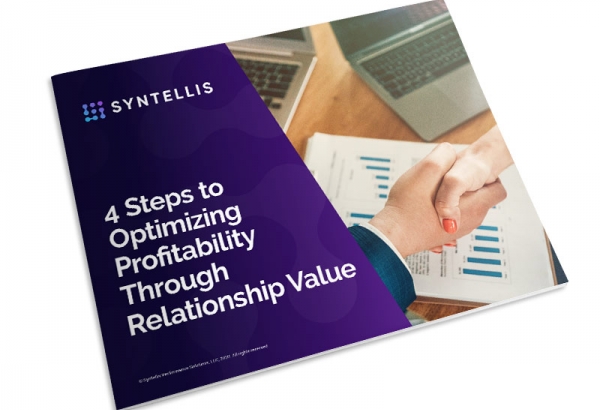(Part 3 of a 3-part blog series)
In part one of this blog series, we demonstrated through the customer’s eyes why executives of financial institutions should understand the value of their customers/members (hereafter referred to as customers), and the implications of not doing so. In part 2, I shared the financial components that should be considered in assessing the customer’s contribution to the institution, along with the importance of determining the customer’s scope of influence.
In this final blog of the series, we explore the importance of leveraging such information to improve the overall customer experience at your institution. The key tenet is to move valuable customer profitability and relationship insight from its historical place in the finance function to frontline staff, who can use it to implement strategies that enrich customer interactions.
As outlined in part two of this series, a key aspect of knowing your customers is understanding their relationships. This “super-householding” provides a single view of the relationship network for each retail and commercial customer. Relationship identification and management historically have been the function of loan officers, relationship managers, marketing staff, and IT personnel. Broad, interconnected relationships receive a unique identifier. This ID typically combines both automatically assigned customer relationships (for example, customers/businesses at the same address), and manually assigned relationships, which should be added by those most familiar with the customer.
Calculating customer profitability and determining the full scope of a relationship are only part of the equation for optimizing customer interactions. This information must be made available in real time to customer-facing personnel, such as relationship managers and branch and call center staff.
Returning to the example from part one, the bank was charging David small fees each month despite the fact that he held millions of dollars in loans and deposits at the institution. These fees upset David, given his significant banking relationship. He contacted the bank, asked the branch manager to look up his accounts, and forcefully requested removal of the fees. David’s main issue was that “the branch manager did not know me or my value as a customer.” The bank lacked the software needed to provide the branch manager with real-time access to customer profitability and relationship information.
Now imagine that David’s bank has a modern relationship profitability information system, such as Axiom™ Relationship Profitability & Pricing System (RPPS), which includes customer segmentation and relationship ranking capabilities. More importantly, imagine the bank makes this information available in real time to David’s relationship manager, Roger. As he prepares to visit David to discuss the renewal of one of his large commercial loans, Roger accesses the bank’s information system on his mobile device. He notes the breadth of David’s banking relationships, its components, and recent fees. Roger also models the financial impact of waiving the fees and sees that it is marginal relative to the profitability of David’s business with the bank. At the beginning of the meeting, Roger thanks David for his business and mentions that he noticed the recent fees charged to his account and will work with appropriate colleagues to remove them promptly. David expresses appreciation, and without further ado, they begin talking about possible renewal of David’s large commercial loan.
Proactive use of relationship/profitability information accomplishes the following:
- It shows David that the bank appreciates his business and relationship
- It could motivate David to refer more business to the bank, both his own and potentially that of new personal and/or business customers
- It reflects positively on Roger’s grasp of David’s relationship with the institution as he begins negotiations on the commercial loan renewal
- Roger is able to identify the potential issue regarding the fees, model the impact of removing them, and use the information to strengthen his relationship with David
This same scenario could play out in numerous interactions, such as with a retail customer who visits a branch office. While that customer may have only one account, branch personnel can to see beyond that to the larger relationship and employ strategies to optimize the interaction to increase customer satisfaction and bank performance. In all scenarios, personnel can make informed, data-driven decisions at the point of client interaction.
As explored throughout this blog series, critical factors for knowing your customers and their impacts on the institution include having:
- Systems in place to calculate profitability at an individual account level; this calculation should include matched-maturity funds transfer pricing, income and expense alignment, and capital attribution.
- A means to aggregate profitability data at the customer level and, more critically, to the relationships level, including tools that individuals closest to the relationships can use to manage their identification and maintenance in the system.
- Finally, but perhaps most critically, this information must be available to customer-facing staff at the point of interaction — whether in a branch office, during a client visit, or at the call center.
Institutions that invest in knowing their customers at a deeper level, including the full scope of their relationships and their contributions to the institution’s bottom line, are strongly positioned to engage customers in ways that promote customer satisfaction and optimize bank performance.
Read more from this series

Know Your Customers Empirically: A Client's Perspective

Know Your Customers Empirically: Understanding the Value of the Relationship


